Basil Thai Queenette
$4.49
Ocimum Basilicum
- Seed Count 100
- Hints of Liquorice
- Annual
In stock
Description
Also known as Bai Horapa, Basil Thai Queenette is commonly used in the cuisines of Thailand, Vietnam, Cambodia, and Laos.
It has an identifiable liquorice flavour not present in sweet basil, and its flavour is more stable under high or extended cooking temperatures than that of sweet basil.
A strikingly ornamental herb with small densely clustered green leaves and brilliant purple stems. Its spires of purple flowers make it a beautiful edition to the herb garden as well as interspersed amongst other annuals and perennials.
It is very fast and easy to grow, and produces flower heads that are deep burgundy, which contrasted nicely against the pale green and burgundy leaves.
Fresh, it can be added to salads, and either the fresh or dried forms can be used to flavour soups, pasta, and vegetable dishes. It matches well with rice, poultry, and seafood. In Thai cuisine, great handfuls of fresh leaves are added to spicy stir-fries.
It can also be steeped into a soothing tea and used to flavour vinegar and oil as dressing components.
| Method: Sow direct | Soil Temp: 18°C - 35°C |
| Cool Mountain: Sep - Jan | Position: Part Shade |
| Arid: Aug - Jan | Row Spacing: 25 cm |
| Temperate: Sep - Feb | Planting Depth: 2 mm |
| Sub Tropical: Aug - Feb | Harvest: 75 Days |
| Tropical: All Year | Plant Height: 60 cm |
Ideal Growing Conditions:
Climate:
- Basil thrives in warm climates. It is sensitive to cold, so it’s best grown during the warmer months. In most parts of Australia, plant basil in late spring after the last frost, continuing through summer.
Location:
- Choose a location that gets full sun, at least 6-8 hours a day. Basil can tolerate some afternoon shade, especially in very hot regions.
Soil Requirements:
- Basil prefers rich, well-draining soil. Incorporate plenty of compost or well-rotted manure to improve soil fertility and structure. Aim for a pH level of around 6.0 to 7.5.
Planting Basil:
Starting Seeds:
- Sow basil seeds indoors in seed trays or directly in the garden once the soil has warmed. Plant seeds about 2mm deep.
- Maintain moisture until seeds germinate, which typically takes about 7-10 days.
Transplanting Seedlings:
- If starting indoors, transplant seedlings once they have two sets of true leaves and temperatures remain consistently warm.
- Space plants about 25 cm apart to allow for proper air circulation.
Care and Maintenance:
Watering:
- Basil needs regular watering, especially during dry spells. Ensure the soil remains moist but not waterlogged. Water at the base of the plant to keep foliage dry and prevent fungal diseases.
Feeding:
- Fertilize with a balanced, organic fertilizer every 4-6 weeks. Alternatively, use a liquid seaweed or fish emulsion as a foliar feed.
Pruning and Pinching:
- Regularly pinch off the tops to encourage bushy growth and prevent the plant from flowering prematurely. Remove any flower buds to keep the plant focused on producing leaves.
Companion Planting
Benefits to Neighbouring Plants:
- Pest Repellent: Basil helps deter pests like aphids, mosquitoes, and some fruit flies. Its strong aroma can mask the scent of other plants, making them less attractive to pests.
- Attracting Beneficial Insects: Basil attracts pollinators and other beneficial insects, like ladybugs, which can help control pest populations.
Ideal Companion Plants:
- Tomatoes: Basil is often planted alongside tomatoes because it is believed to enhance their growth and flavour, while also repelling harmful insects like hornworms.
- Capsicum & Chilli: Like tomatoes, capsicum and chillies can benefit from basil’s pest-repelling qualities.
- Oregano: These herbs can thrive together, potentially enhancing each other’s flavours.
Plants to Avoid:
- Cabbage Family: Basil may compete unfavourably with plants like cabbage, broccoli, and cauliflower.
- Rue: This herb can be harmful to basil, so it’s best to keep them apart.
Soil Improvement:
- Basil can help improve soil health and structure through its root system, which can enhance nutrient availability for neighbouring plants.
Pest and Disease Management:
Common Pests:
- Be on the lookout for aphids, whiteflies, and slugs. Control these pests with insecticidal soap or introduce beneficial insects like ladybugs.
Diseases:
- Basil can be prone to downy mildew and fusarium wilt. Ensure good air circulation and avoid overhead watering to mitigate these risks.
Harvesting:
When to Harvest:
- Begin harvesting basil when plants are about 15cm (6 inches) tall. Harvest leaves in the morning when oil concentrations are highest for the best flavour.
How to Harvest:
- Use sharp scissors or your fingers to pinch off leaves or cut stems just above a pair of leaves. This will encourage new growth.
Preservation:
- For prolonged use, basil can be frozen or dried. For freezing, blend with a little olive oil and pour into ice cube trays for easy portioning.

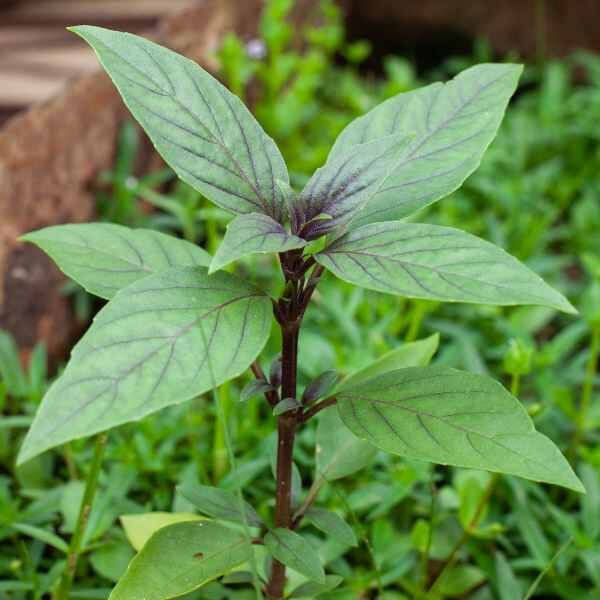



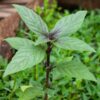
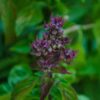
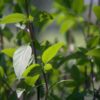
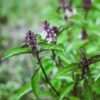
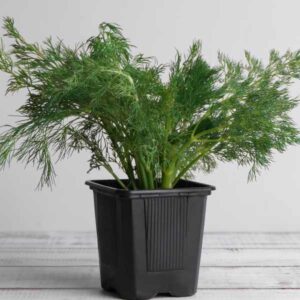

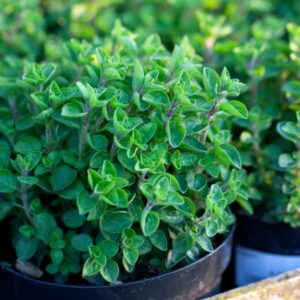
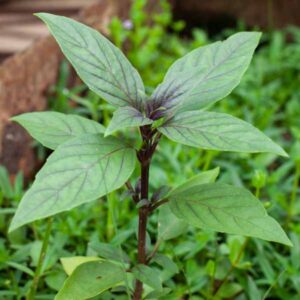
Reviews
There are no reviews yet